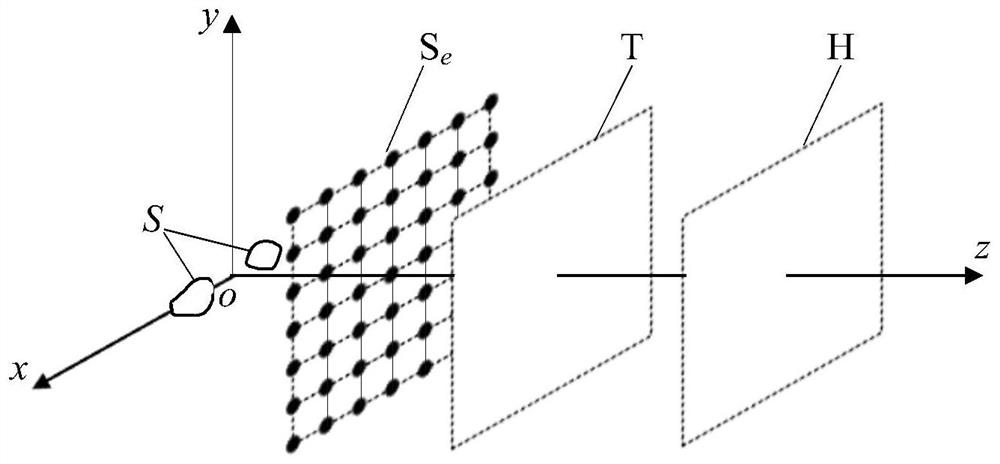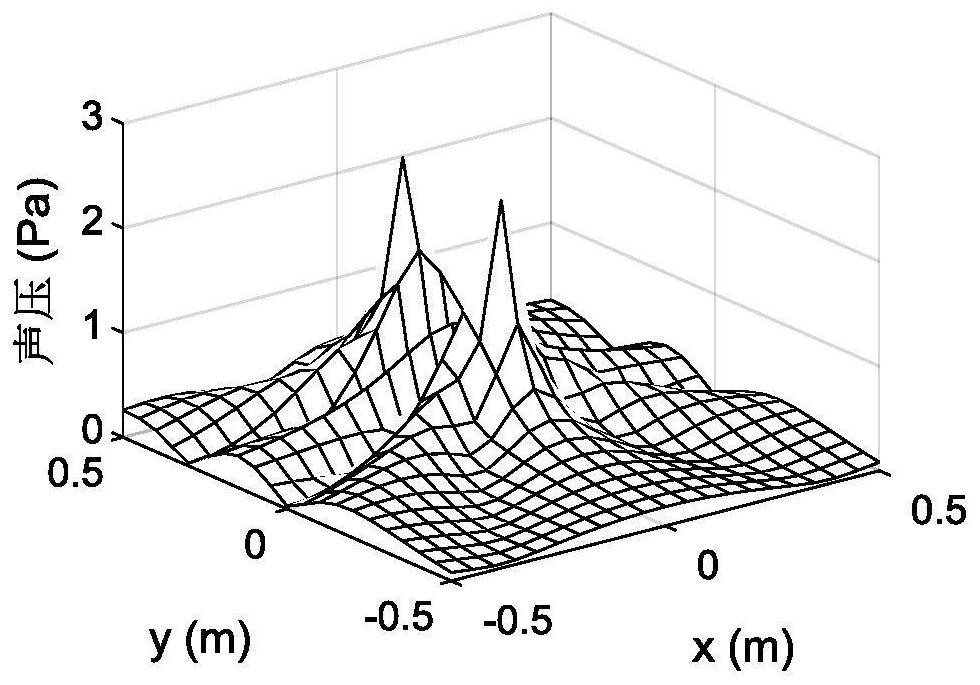Variable norm equivalent source near-field acoustical holography algorithm with sound source sparseness adaptability
A near-field acoustic holographic and adaptive technology, applied in complex mathematical operations, calculations, computer components, etc., can solve the problem of low universality, poor flexibility of the solution process, and inability to match the actual sparsity reconstruction results well. problem, to achieve the effect of stable performance, excellent robustness and anti-interference ability
- Summary
- Abstract
- Description
- Claims
- Application Information
AI Technical Summary
Problems solved by technology
Method used
Image
Examples
Embodiment Construction
[0060] In this embodiment, the variable-norm equivalent source near-field acoustic holography algorithm with adaptive sound source sparsity is performed as follows:
[0061] Step a, arrange the holographic surface in the near-field area of the sound source and obtain the measured sound pressure on the holographic surface by measurement:
[0062] In the sound field generated by the target sound source, a holographic surface H is arranged in the near-field radiation area. The holographic surface H is a curved surface of any shape. Measuring grid points are divided on the holographic surface H, and the position of each measuring grid point is obtained through sensor measurement. The measured sound pressure P H .
[0063] Step b. Arrange the target reconstruction surface T between the sound source and the holographic surface H, and arrange the equivalent source surface S on the side of the target reconstruction surface T away from the holographic surface H e , the equivalent s...
PUM
 Login to View More
Login to View More Abstract
Description
Claims
Application Information
 Login to View More
Login to View More - R&D
- Intellectual Property
- Life Sciences
- Materials
- Tech Scout
- Unparalleled Data Quality
- Higher Quality Content
- 60% Fewer Hallucinations
Browse by: Latest US Patents, China's latest patents, Technical Efficacy Thesaurus, Application Domain, Technology Topic, Popular Technical Reports.
© 2025 PatSnap. All rights reserved.Legal|Privacy policy|Modern Slavery Act Transparency Statement|Sitemap|About US| Contact US: help@patsnap.com



